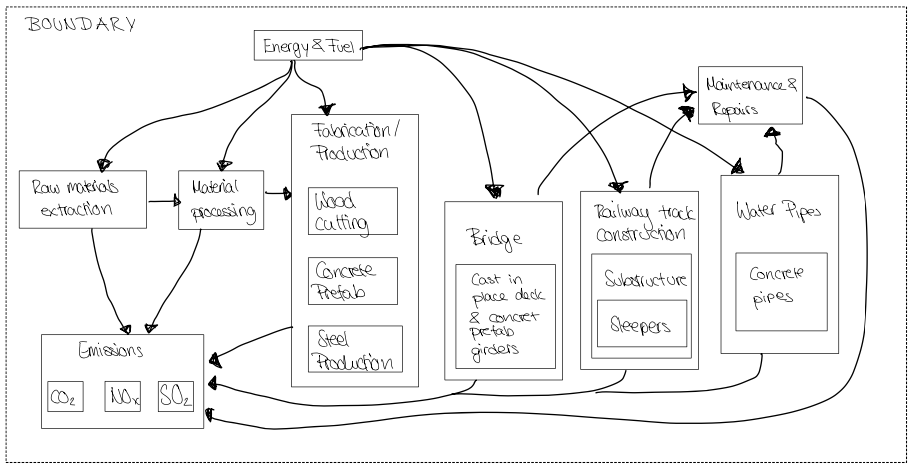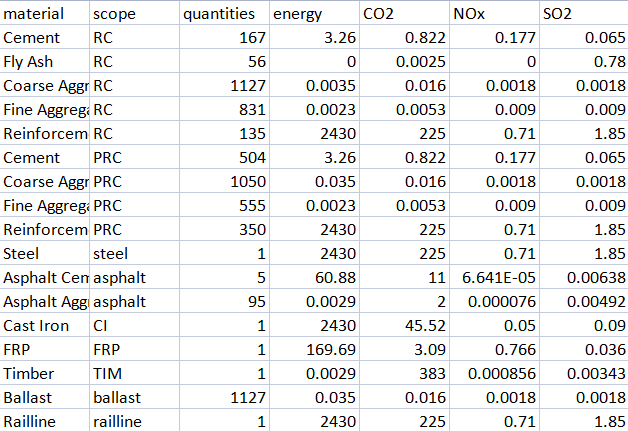Life Cycle Analysis (LCA)’s main goal is to evaluate the effects a product has on the environment over the entire period of it’s lifetime. After the evaluation of multiple products, a product that has the best resource-use efficiency with low liabilities and impact towards the environments will then be chosen. The integrated civil system chosen here is based on the three subsystems mentioned above.
The goal of this project is to find out the carbon footprint of the framed structure. Fig.1 defines the scope and boundaries of this project. This scope is defined to make design engineers to decide on the energy and emission factors for each materials used.
Fig1. Scope and Boundary definition for the Integrated System
The life cycle inventory (LCI) analysis is the heart of the LCA process, since it is involved with actual data collection, validation, and calculation procedures. Data collection sheets should be prepared and the data should be validated by process experts as reviewers. After validation, data can be converted to units per functional unit basis. The functional unit is the reference unit of a product or process for which quantified performance is measured in an LCA study.
The LCA is conducted by calculating the total energy consumption, total emission created, and cost it has towards the environment. These values are computed based on the amount of the materials needed for each subsystem. For the inventory part, following values were considered for each material during the integration.
Fig2. Life Cycle Inventory Data
The cost generated during the emission of the CO2, SO2 , NOx and use of energy are given as an input in order to find the costs of the impact of the environment. Following are the results of the simulation of finding the demand of the former mentioned natural phenomenon’s.
Fig3. Life Cycle Analysis of Integrated System
References
- Nawshad Haque,. 2020., “The Life Cycle Assessment of Various Energy Technologies”
- Huang, Y. Artificial Neural Network Model of Bridge Deterioration. Journal of 38Performance of Constructed Facilities, Vol. 24, No. 6, 2010.
Content:
1. Scope & Integration Context of the Civil System
2. Integrated Maintenance Strategies
4. Multi-Objective Optimization
Downloads:
1. R-Script


